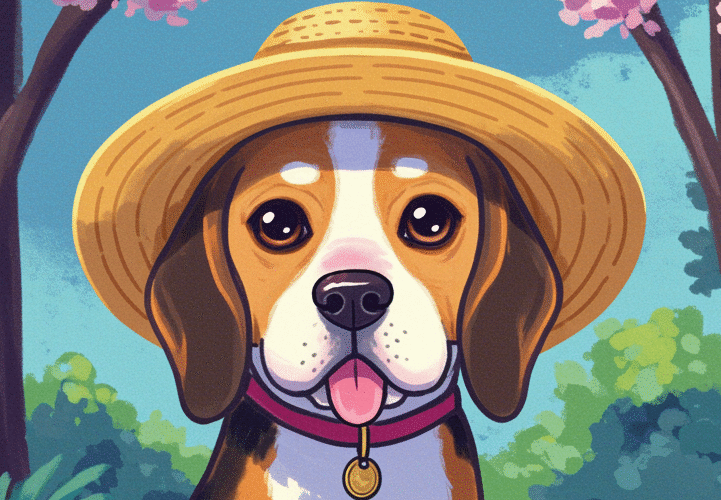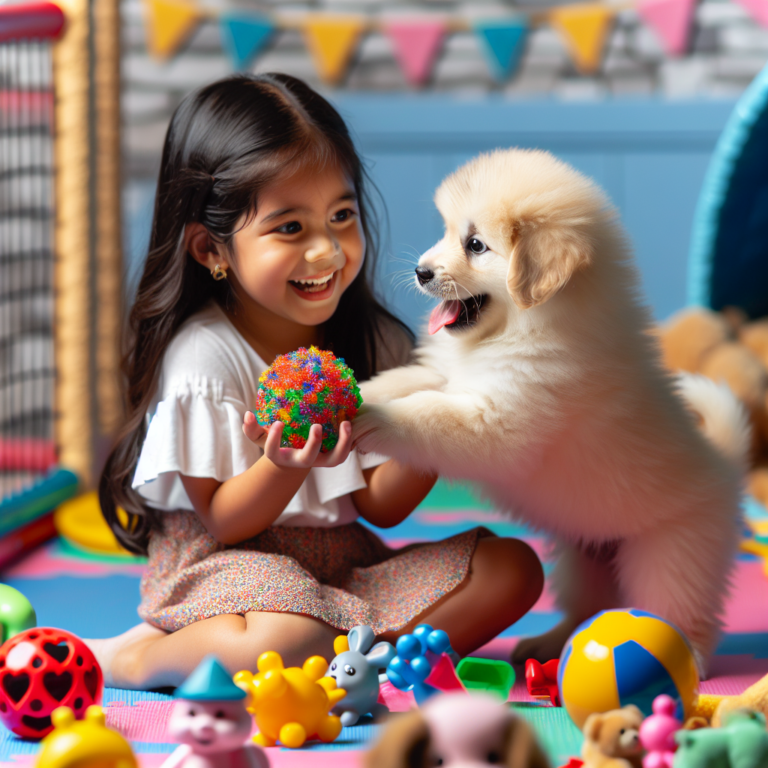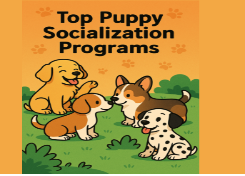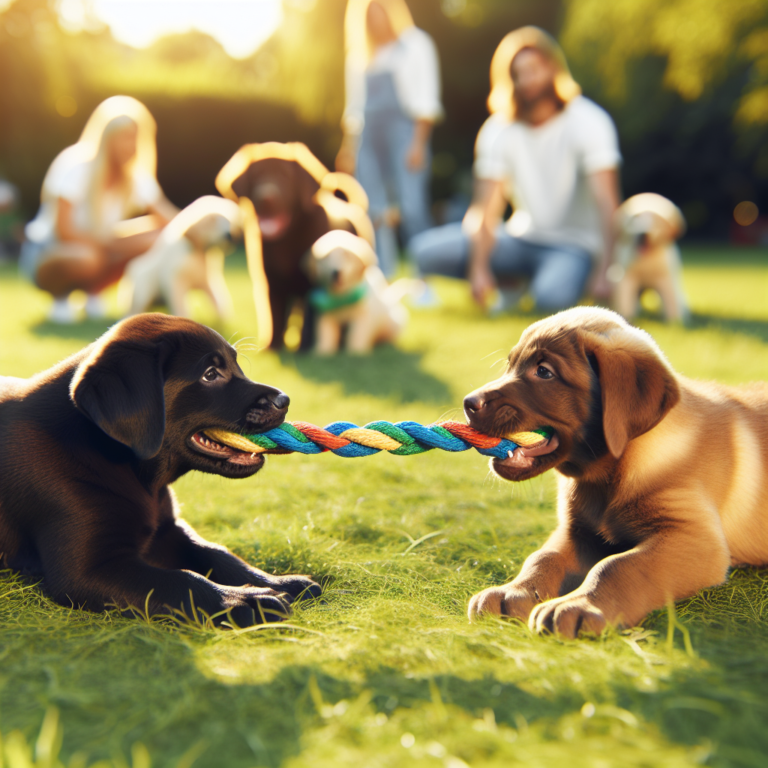Introducing Your Puppy to Other Dogs: Safety Tips and Timeline
Let’s Talk Puppy Socialization
Hey there, new puppy parent! So you’ve got this adorable ball of fur running around your house, and now you’re considering introducing them to the bigger doggy world. Smart move! Puppy socialization isn’t just some fancy term trainers throw around—it’s your pup’s ticket to becoming a well-adjusted, happy canine citizen. As one of my favorite trainers always says,
“A socialized puppy today means fewer headaches tomorrow!”
When your puppy learns to play nice with other dogs early on, you’re setting them up for a lifetime of wagging tails instead of fearful growls. Think of it as sending your kid to preschool before kindergarten—they learn the basics of “how to play well with others” before the big leagues!
The Science Behind the Sniffs
Let’s get into what’s happening in that adorable puppy brain. During socialization, your pup creates mental maps of what’s normal, safe, and fun in their world. According to renowned veterinary behaviorist Dr. Sophia Yin,
“Puppies have a critical socialization window that begins to close around 12-14 weeks. Miss this window, and you’re working uphill for the rest of your dog’s life.”
When puppies interact with other dogs, they’re learning crucial “doggy language”—how to read body postures, when play is getting too rough, and how to communicate their boundaries. One study from the University of Bristol found that puppies with limited social experiences before 16 weeks were significantly more likely to develop fear-based aggression later in life. Yikes! As my local trainer Mike puts it,
“Every positive interaction your puppy has now is like making a deposit in their confidence bank account.”
Timing Is Everything!
So when should you start this whole introduction thing? The sweet spot is typically between 8-12 weeks. At this age, puppies are like little sponges—soaking up experiences without the fear that might develop later.
Sarah, a kindergarten instructor I know, shared this gem:
“I tell all my clients to watch for the ‘curious head tilt’ moment. When your puppy sees another dog and their head tilts with interest rather than tucking their tail—that’s your green light to start slow introductions.”
Before 8 weeks, puppies are usually still with their littermates, learning crucial bite inhibition and basic dog communication. After 12 weeks, they start developing more caution around new experiences. That’s not to say older puppies can’t be socialized—it just might take a little more patience and positive reinforcement.

Getting Ready for the Big Meet-and-Greet
Before you rush your puppy into the local dog park (please don’t do that right away!), let’s talk prep work:
Health first, friends later: Make sure your pup has started their vaccination series. Your vet might give you the okay for controlled meetings with fully vaccinated dogs before the series is complete. As Dr. Patricia McConnell, animal behaviorist, points out:
“We need to balance disease prevention with critical socialization needs. Both are essential for your puppy’s health.”
Know thy puppy: Is your little buddy naturally outgoing or a bit shy? My friend Jake’s Border Collie puppy needed to watch other dogs from a distance for a few days before she was comfortable approaching, while my Lab mix was trying to make friends with shadows on day one! There’s no one-size-fits-all approach here.
Location, location, location: A neutral spot works wonders for first meetings. Dogs can be territorial creatures, and your backyard is YOUR puppy’s territory! Try a quiet area of a park where you can maintain control, but neither dog feels like they’re defending their turf.
Choose first friends wisely: Look for calm, well-socialized adult dogs for your puppy’s first introductions. My neighbor’s gentle Golden Retriever, Bella, has been the unofficial “welcome committee” for countless puppies in our neighborhood. As Bella’s owner says,
“She’s basically running a finishing school for puppies at this point!”
Step-by-Step: The Introduction Dance
All right, let’s break this down into digestible puppy-sized steps:
- The parallel walk: Start by walking both dogs side by side with plenty of space between them (think different sides of a quiet street). This lets them get used to each other’s presence without pressure to interact. Dog trainer Patricia notes,
“This is like sitting next to someone new at school before you actually strike up a conversation.”
- Watch the body language: Look for loose, wiggly movements from both dogs. Stiff postures, raised hackles, or fixed staring are yellow flags to slow things down. As my trainer friend Carlos says,
“Dogs speak with their bodies first, their barks second. Learn to read what they’re saying!”
- The sniff permission: Allow brief sniffing sessions, starting with just a few seconds. One experienced foster mom told me,
“I count to five for the first sniff. If everything looks good, we try for ten next time, then fifteen. It’s like slowly turning up the volume rather than blasting the stereo right away.”
- Short and sweet play sessions: Keep early play sessions brief—five minutes is plenty! End on a positive note before anyone gets overtired or overstimulated. Remember the playground motto from kindergarten: “Always leave them wanting more!”
- Gradual off-leash fun: Once both dogs are comfortable and showing consistent play signals (play bows, bouncy movements, taking turns chasing), you can try a controlled off-leash setting like a secure yard. Stay close and be ready to redirect if the play gets too intense.
Socialize a Scared Puppy..What You Should Know…
Safety First, Always!
Size matters in the dog world! My tiny Chihuahua puppy Luna had a very different introduction than my friend’s Saint Bernard pup. Big dogs, even friendly ones, can accidentally frighten or hurt small puppies just by being enthusiastic.
Watch for these common mistakes:
- Forcing interactions: “My puppy needs to get over their fear” is NOT a valid approach! As renowned trainer Ian Dunbar says,
“Force-based socialization isn’t socialization at all—it’s trauma.”
- Mistaking tolerance for enjoyment: Just because your puppy isn’t running away doesn’t mean they’re having fun. Look for active participation and reciprocal play.
- Intervention timing: Don’t wait until teeth are bared to separate dogs. Learn to spot rising tension—like a play that gets progressively more intense without breaks.
Jessica, a dog behaviorist I consulted when introducing my new puppy, shared this gem:
“Think of yourself as your puppy’s social secretary and bodyguard. Your job isn’t just to make introductions but to make sure every interaction leaves your puppy thinking ‘dogs are awesome!'”
Creating Pawsitive Associations
Make these doggy meet-ups magical for your pup! Carry high-value treats (yes, the really good stuff—like tiny bits of chicken or cheese) and reward calm, appropriate behavior. When your puppy looks at another dog calmly? Treat! When they play gently? Treat and praise!
“The treat timing is everything,”
Says professional trainer Maya.
“You want to catch and reward the exact moment of good behavior, not three seconds later when they’re already doing something else.”
Don’t forget the power of play itself as reinforcement. Many puppies find playing with other dogs inherently rewarding. My neighbor’s puppy Rusty learned to sit calmly before being released to play with his doggy friends—the play itself became the reward for good behavior!
When Things Don’t Go As Planned
Let’s be real—not every puppy is a social butterfly right away. If your pup seems fearful, take several steps back in the process. Maybe they need to watch dogs from a distance for a while before actually meeting them.
Fear signs include:
- Hiding behind you
- Tucked tail
- Whale eye (showing the whites of their eyes)
- Stiff body or freezing in place
As trainer Jamie told me,
“A scared puppy isn’t being stubborn or bad—they’re genuinely overwhelmed. Respect their feelings just like you would a scared child.”
If your puppy shows signs of resource guarding or aggressive behavior (growling, snapping, lunging), don’t panic—but do get professional help early.
“These behaviors rarely get better on their own,”
Explains canine behaviorist Dr. Karen Overall.
“The good news is that with early intervention, most puppies respond beautifully to behavior modification.”
Keeping the Social Calendar Full
Socialization isn’t a “one and done” deal. Your puppy needs ongoing, positive experiences throughout adolescence and beyond. Consider these options:
Puppy socials: Many training centers offer supervised puppy playtimes where trained staff ensure all interactions remain positive. Trainer Zoe calls these “the preschool playground of the dog world.”
Doggy playdates: Schedule regular meetups with dogs you know are good influences. “My puppy has his ‘core friend group’ just like my kids do,” laughs Sam, whose Beagle puppy meets the same three dogs weekly.
Training classes: Beyond the obvious obedience benefits, group classes provide controlled exposure to other dogs. “In my classes, puppies learn that they can be near other dogs while focusing on their humans—a crucial life skill,” explains trainer Ellie.
One puppy parent shared this brilliant idea:
“We created a neighborhood puppy rotation where five of us with young dogs take turns hosting monitored playdates. The puppies get socialization, and we get support and coffee!”
The Lifelong Journey
Remember that socialization doesn’t end when puppyhood does. Your dog will continue learning from social experiences throughout their life. As veterinary behaviorist Dr. Lisa Radosta puts it,
“Think of socialization as an ongoing conversation your dog is having with the world, not a checklist to complete.”
Keep exposing your growing dog to new canine friends in positive ways. One study showed that dogs who continued having positive social interactions throughout adolescence had fewer behavior problems as adults than those whose socialization stopped after puppyhood.
My trainer shared this wisdom when my puppy turned one:
“The work you’ve put in during puppyhood has built the foundation, but like any relationship, friendships between dogs need maintenance and care.”
Final Thoughts From the Dog Park
Introducing your puppy to other dogs is one of the most important gifts you can give them. A well-socialized puppy grows into a confident dog who can navigate the world with ease—whether that’s calmly passing dogs on walks, enjoying doggy daycare, or making friends at the dog park.
Remember what dog behaviorist Patricia McConnell wisely notes:
“Dogs are social animals who need social connections to truly thrive. By teaching your puppy how to make friends safely, you’re honoring their fundamental nature.”
So, take a deep breath, grab those treats, find some suitable doggy friends, and help your puppy learn the wonderful art of canine friendship. Years from now, when your dog happily greets a new furry friend with a play bow and a waggy tail, you’ll know it all started here, with those careful first introductions.
Now go make some doggy magic happen! 🐾








